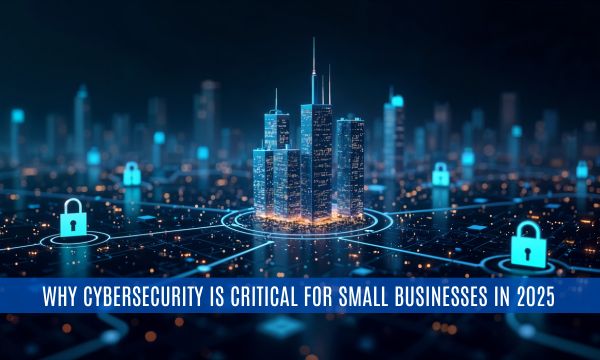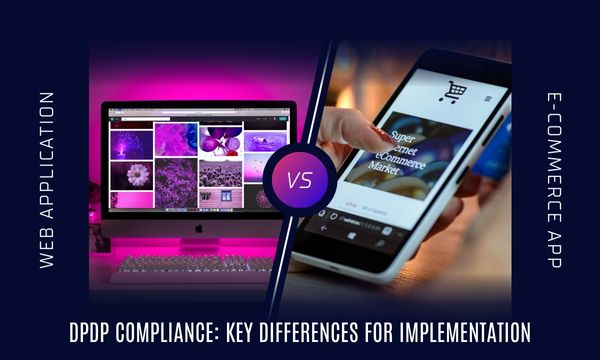
Imagine your manufacturing operations grinding to a halt because of a cyber attack. What if critical intellectual property is stolen or your production lines are locked down by ransomware? In an era where digital and operational technologies converge, these scenarios are not merely theoretical—they are tangible threats faced by today’s manufacturers. With the stakes so high, how prepared is your organization to manage and mitigate these risks? Or how efficient is your risk management for your manufacturing organisation?
Cyber threats are evolving rapidly, and the manufacturing sector, with its reliance on complex IT and operational systems, is particularly vulnerable. From disrupting production to compromising sensitive data, the impact of a cyber attack can be devastating. This reality begs the question: how effective is your risk management strategy in combating these threats?
What is Risk Management in Cybersecurity?
Risk management in cybersecurity involves identifying, assessing, and mitigating risks to protect an organization’s information and operational assets. For manufacturing industries, this means addressing potential threats to IT systems, operational technology (OT), and sensitive data.
Here’s a detailed look at how risk management applies to cybersecurity in the manufacturing sector:
1. Risk Identification
Understanding Potential Threats: Risk identification is the first step in the risk management process. It involves recognizing potential cybersecurity threats that could affect your manufacturing operations. These threats can come from various sources, including:
* External Threats: Cybercriminals, hackers, and ransomware groups targeting your systems.
* Internal Threats: Employees or contractors who may accidentally or intentionally compromise security.
* Technological Threats: Vulnerabilities in software, hardware, or network configurations.
Methods:
* Threat Modeling: Analyze your manufacturing environment to identify where and how attacks might occur.
* Historical Data Review: Examine past incidents and industry trends to understand common threats.
2. Risk Assessment
Evaluating Impact and Likelihood: Once threats are identified, the next step is to assess the risks associated with each threat. This involves evaluating the potential impact and likelihood of each risk occurring:
* Impact Assessment: Determine the potential consequences of a cyber attack on your manufacturing operations, including financial losses, operational disruptions, and damage to reputation.
* Likelihood Assessment: Evaluate how probable it is for each threat to exploit a vulnerability.
Techniques:
* Risk Matrix: Use a risk matrix to categorize risks based on their impact and likelihood.
* Vulnerability Scanning: Conduct scans to identify vulnerabilities in your systems that could be exploited.
3. Risk Mitigation
Implementing Controls and Safeguards: Risk mitigation involves developing and implementing strategies to reduce the likelihood of a threat occurring or minimize its impact if it does occur. This includes:
* Technical Controls: Deploy security technologies such as firewalls, antivirus software, intrusion detection systems, and encryption to protect your IT environment.
* Administrative Controls: Establish and enforce security policies, procedures, and standards.
* Physical Controls: Secure physical access to critical systems and infrastructure.
Strategies:
* Patch Management: Regularly update and patch software and systems to address known vulnerabilities.
* Access Controls: Implement strict access controls to ensure that only authorized personnel can access sensitive systems and data.
4. Risk Monitoring and Review
Ongoing Risk Management: Effective risk management is an ongoing process. Continuous monitoring and regular reviews are essential to ensure that your risk management strategies remain effective and relevant:
* Monitoring: Continuously monitor systems for signs of suspicious activity or potential breaches.
* Incident Response: Develop and test an incident response plan to quickly address and mitigate any cyber incidents.
* Review and Update: Regularly review and update risk management practices based on new threats, changes in technology, and evolving business needs.
Tools and Techniques:
* Security Information and Event Management (SIEM): Use SIEM solutions to collect and analyze security data from across your organization.
* Regular Audits: Conduct regular security audits to evaluate the effectiveness of your risk management strategies.
5. Risk Communication and Training
Ensuring Awareness: Effective risk management also involves communicating risks and security practices to all stakeholders within the organization:
* Training Programs: Provide ongoing cybersecurity training to employees to ensure they understand the risks and how to mitigate them.
* Communication: Regularly update employees and stakeholders on changes in risk management practices and emerging threats.
Best Practices:
* Phishing Awareness: Educate employees on recognizing phishing attempts and other social engineering tactics.
* Incident Reporting: Encourage prompt reporting of any suspicious activity or security incidents.
Why Risk Management is Crucial for Manufacturing Organizations
1. Protecting Operational Continuity: Manufacturing operations are often highly integrated and dependent on technology. Cyber incidents can disrupt production lines, halt operations, and lead to significant financial losses. Effective risk management ensures that potential disruptions are identified and mitigated before they can impact operations.
2. Safeguarding Sensitive Data: Manufacturers handle valuable data, including intellectual property, design specifications, and customer information. Cyber attacks that compromise this data can lead to intellectual property theft and loss of competitive advantage. Risk management helps protect this sensitive information from unauthorized access and breaches.
3. Ensuring Regulatory Compliance: The manufacturing industry is subject to various regulations and standards such as ISO 27001, NIST, and GDPR. Non-compliance can result in legal penalties and damage to reputation. Risk management ensures adherence to these regulations by implementing required controls and practices.
4. Protecting Reputation: A cybersecurity incident can significantly damage a manufacturer’s reputation. Customers, partners, and stakeholders may lose trust if their data or the manufacturer’s products are compromised. Proactive risk management helps maintain trust and uphold a positive corporate image.
Key Areas in Risk Management
Here are the key areas in risk management that every manufacturing company should focus on:
1. Governance and Compliance
Establishing a Strong Governance Framework:
* Policy Development: Create and enforce comprehensive security policies that align with industry standards and regulatory requirements.
* Roles and Responsibilities: Define clear roles and responsibilities for cybersecurity within the organization, ensuring accountability at all levels.
* Compliance Monitoring: Regularly monitor and audit compliance with regulations such as ISO 27001, NIST, GDPR, and other relevant standards. Non-compliance can lead to severe legal and financial repercussions.
2. Risk Identification and Assessment
Identifying and Evaluating Risks:
* Threat Intelligence: Continuously gather and analyze threat intelligence to stay informed about emerging cyber threats and vulnerabilities.
* Vulnerability Assessments: Conduct regular vulnerability assessments and penetration testing to identify weaknesses in your IT and OT environments.
* Risk Analysis: Evaluate the potential impact and likelihood of identified risks to prioritize mitigation efforts effectively.
3. Risk Mitigation and Controls
Implementing Effective Safeguards:
* Technical Controls: Deploy advanced security technologies such as firewalls, intrusion detection systems (IDS), and endpoint protection to defend against cyber threats.
* Administrative Controls: Establish strong access controls, enforce security policies, and ensure that employees adhere to best practices.
* Physical Controls: Secure physical access to critical infrastructure and systems to prevent unauthorized access.
4. Supply Chain Security
Securing Third-Party Relationships:
* Third-Party Risk Management: Assess and manage risks associated with suppliers and partners. Ensure they adhere to your security standards.
* Due Diligence: Conduct thorough due diligence before engaging with third-party vendors, including security audits and assessments.
* Continuous Monitoring: Regularly monitor the security practices of your supply chain to identify and address any vulnerabilities.
5. Incident Response and Recovery
Preparing for and Responding to Cyber Incidents:
* Incident Response Plan: Develop and maintain a comprehensive incident response plan to ensure a quick and effective response to cyber incidents.
* Disaster Recovery: Establish robust disaster recovery and business continuity plans to minimize downtime and ensure rapid recovery of operations.
* Post-Incident Analysis: Conduct thorough post-incident reviews to identify root causes and implement corrective actions to prevent future incidents.
6. Program Maturity and Continuous Improvement
Evolving Your Cybersecurity Program:
* Maturity Assessment: Regularly evaluate the maturity of your cybersecurity program using frameworks such as the Cybersecurity Maturity Model Certification (CMMC).
* Continuous Improvement: Implement a continuous improvement process to regularly update and enhance your cybersecurity measures based on new threats and technological advancements.
* Training and Awareness: Provide ongoing cybersecurity training and awareness programs to ensure that all employees are equipped to recognize and respond to cyber threats.
7. Technology and Innovation
Leveraging Advanced Technologies:
* Artificial Intelligence (AI) and Machine Learning (ML): Utilize AI and ML for enhanced threat detection, predictive analytics, and automated response.
* Security Automation: Implement security automation tools to streamline and improve the efficiency of your security operations.
* Zero Trust Architecture: Adopt a Zero Trust approach to security, ensuring that all users, devices, and applications are continuously verified and monitored.
8. Risk Communication and Collaboration
Fostering a Culture of Security:
* Stakeholder Communication: Regularly communicate risks, security policies, and incident response procedures to all stakeholders, including employees, partners, and customers.
* Collaboration: Foster collaboration between IT, OT, and other departments to ensure a unified approach to cybersecurity.
* Executive Support: Ensure that cybersecurity initiatives receive strong support and commitment from senior management.
Conclusion
In the manufacturing industry, where operations are complex and interconnected, effective risk management is essential for safeguarding against cyber threats. By understanding the principles of risk management, embracing the latest trends, and focusing on key areas such as governance, supply chain security, program maturity, and continuous improvement, manufacturers can build a resilient cybersecurity posture.
Now is the time to strengthen your cybersecurity strategy. Assess your current risk management practices, identify areas for improvement, and implement robust measures to protect your operations. Evaluate your current risk management practices and identify areas for improvement. Engage with cybersecurity experts to develop and implement a comprehensive risk management strategy tailored to your manufacturing operations. Invest in continuous improvement and stay informed about the latest trends and best practices in cybersecurity to ensure the resilience and success of your organization in an increasingly digital world.
Take proactive steps today to safeguard your manufacturing operations and secure your future. Investing in effective risk management is not just about mitigating risks; it’s about ensuring the resilience and success of your organization in a rapidly changing digital landscape.



